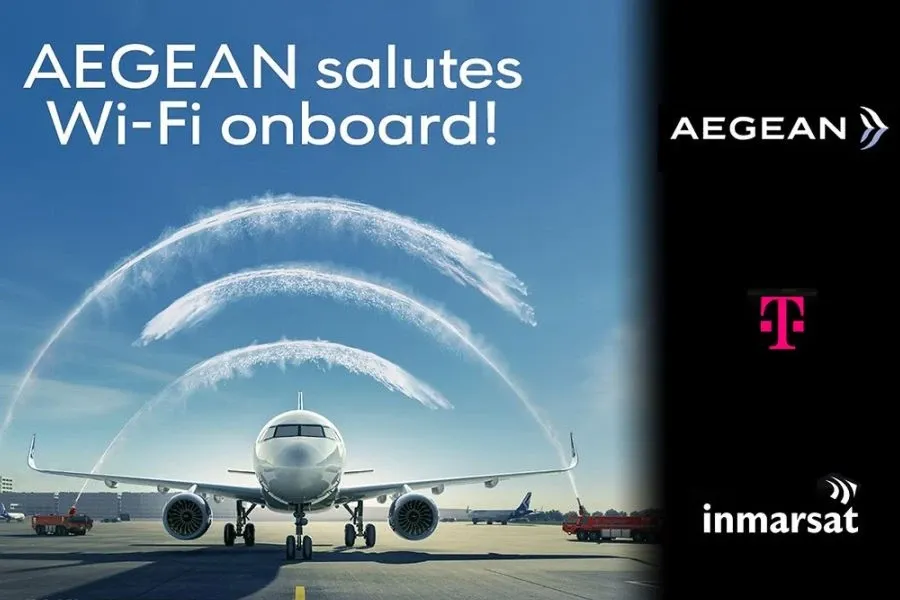Infobip and Haas Unveil Interactive Fan Quiz
Infobip is partnering with the MoneyGram Haas F1 Team on an innovative digital fan engagement campaign, designed to bring racing fans closer to the action.

Greek airline company AEGEAN announced it will introduce high-speed inflight broadband, powered by the European Aviation Network (EAN). The solution, provided by Inmarsat and Deutsche Telekom, will be installed on all existing and new AEGEAN Airbus A320 and A321 aircraft by 2025, with the first seven entering service as of this week.
Passengers have access to three different Wi-Fi packages, including a free 10-minute “try before you buy“ service to browse the internet, send and receive emails, and access messaging and social media applications. This can be extended by selecting either the “text and surf“ package or upgrading to the “streaming“ option, which adds the capability to watch videos or listen to audio online. As Europe’s fastest inflight broadband solution, EAN offers high speeds, uninterrupted coverage across Europe, and significantly lower latency than any other aviation connectivity service on the market.
Under this agreement, AEGEAN has also partnered with Display Interactive to create a customized digital portal, allowing passengers to access Wi-Fi packages and a rich entertainment platform using their devices. This enables the passengers to explore multiple entertainment options, receive real-time travel information and sign up for AEGEAN’s Miles+Bonus frequent flyer program. Display Interactive, which is also a partner for Inmarsat’s OneFi passenger experience platform, has developed the portal for AEGEAN to enhance its passenger experience and enable its inflight connectivity offering.
EAN has been designed specifically to meet the needs of European aviation, delivering consistent inflight broadband across Europe, one of the world’s most congested airspaces. Developed by Inmarsat and Deutsche Telekom, in partnership with leading European companies such as Thales, Nokia, Airbus, Cobham, and Eclipse Technics, it also offers the fastest ever installation time for a connectivity solution, requiring only seven hours per aircraft, meaning significantly less downtime. Combined with the system’s low weight, low drag, and low maintenance, this results in lower overall operating costs.